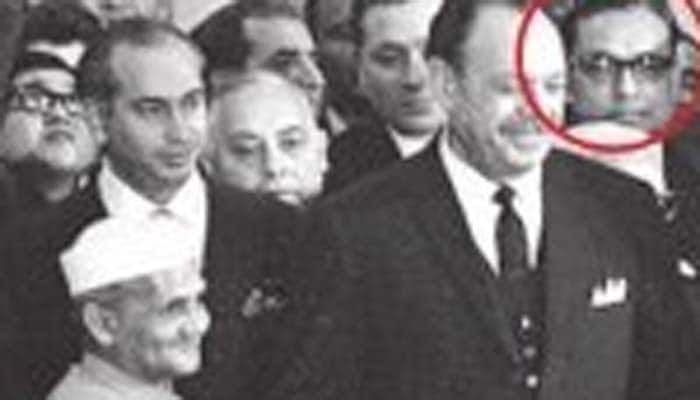New Delhi: A forensic face-mapping report submitted by a British expert, which is yet to be wholly ascertained, has found strong resemblance between a man – sharing space with the former prime minister Lal Bahadur Shashtri in a photograph clicked in Tashkent – and Netaji Subhas Chandra Bose.
The report, if proven authenticated, can act as a concrete evidence in the case that Netaji was alive even two decades after he was formally declared dead in an alleged plane crash.
Netaji Subhash Bose spotted in 1966 picture? Was Netaji alive 20 yrs post being declared dead? #NetajiMystery pic.twitter.com/SIcMyrdV2F
— Swadeshi Vichaar (@venky6666) December 12, 2015
The research team has urged PM Narendra Modi to press Russian President Vladimir Putin to disclose the truth during his visit to Moscow later this month, The Times of India claims.
The TOI further quoted Neil Miller, who has presented expert opinion in cases at UK high courts and the International Court of Justice in Hague, as saying that the face mapping of the mystery man seen in the Tashkent "lends support leaning on strong support to the contention that the person seen in the picture and Subhas Chandra Bose are one and the same person".
The face-mapping report may also revive controversies surrounding the sudden demise of Shastri in Tashkent in 1966.
It is believed that Shastri had reportedly called his family before his death and had told his kin that he would make some big revelation after returning to India that would divert the country's attention from the contentious Tashkent declaration.
Some activists demanding declassification of Netaji files had also claimed that Shastri wanted to set up a second inquiry commission to investigate the mystery behind Netaji's disappearance which had not gone down well with an influential section of the ruling party.
Miller had examined the evidence for a month and then submitted a 62-page report last month where he noted that there were noticeable similarities in the facial features including ears, eyes, forehead, nose, lips and chin. The differences like hairline could be attributed to image quality, capture angles and items such as glasses and clothing that mask certain areas, TOI reports.

















